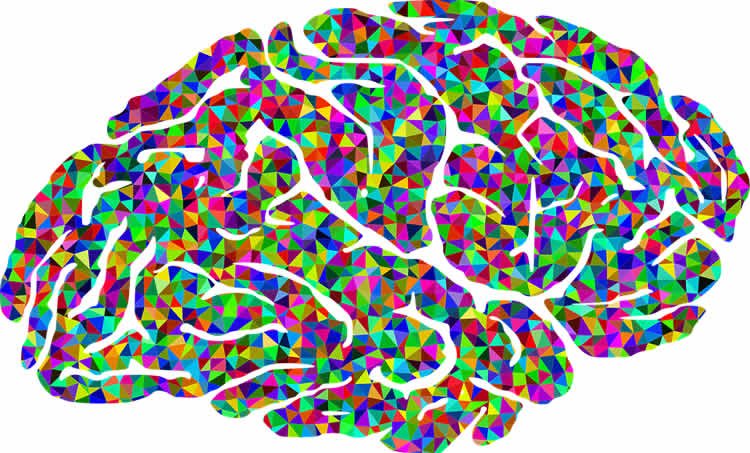Summary: Researchers investigate the neural mechanisms behind consciousness.
Source: NYU.
Researchers at New York University have discovered a novel mechanism through which information can be effectively transmitted across many areas in the brain–a finding that offers a potentially new way of understanding how consciousness arises.
The study appears in the journal Neuron.
“For us to navigate through everyday situations, it is critical that electrical signals from our senses stimulated by the external world are able to reach relevant brain areas,” explains Xiao-Jing Wang, Global Professor of Neural Science at NYU and the paper’s senior author. “Our brain, however, is a very complicated system, with billions of neurons organized in an interconnected network with more than a hundred areas. It is therefore not easy to understand how signals may travel from area to area in an efficient manner.”
Brain areas tend to be organized in a hierarchy, ranging from “lower” sensory areas to “higher” cognitive areas. These areas have excitatory and inhibitory neurons, which either stimulate or suppress activity in other neurons.
Understanding how neural signals are transmitted across this hierarchy, the researchers note, is still a fundamental challenge in neuroscience and served as the focal point for the Neuron study.
Previous computer modeling of signal transmission across areas in the brain did not take into account the complexity of brain’s area-to-area connections. By contrast, thanks to the recent advances in the field of “Connectomics” dedicated to quantitatively analyzing the brain’s connectivity, the NYU scientists were able to build models incorporating anatomical connectivity data of macaque monkeys.
Here they found that signal transmission in a large-scale model of the primate brain is robust under the condition in which area-to-area connections exhibit a “balance” between excitation and inhibition. Specifically, stimulation provided by the excitatory neurons allows for signals to be transmitted, whereas suppression from inhibitory neurons makes sure the signal activity does not grow out of control.

“Unexpectedly, our model reveals that only when the signal is strong enough, above a threshold level, the signal reaches a large set of areas of the brain region called the prefrontal cortex, which plays a critical role in high-level cognition,” said Madhura Joglekar, the paper’s first author who conducted the research as a postdoctoral fellow in Wang’s lab and is now an instructor at NYU’s Courant Institute of Mathematical Sciences.
Notably, the global activation pattern resembles the ones previously found in the human brain while consciously perceiving sensory information–a parallel suggesting a potential connection between the proposed “balanced” large-scale neural circuit mechanism for signal transmission and understanding how conscious information processing is achieved.
The paper’s other co-authors are former members of Wang’s lab: Jorge Mejias, now an assistant professor at the University of Amsterdam, and Guangyu Robert Yang, now a research fellow at Columbia University.
Funding: This work was supported by the Swartz Foundation, the Office of Naval Research (N00014-17-1-2041), and Simons Collaborative Global Brian Program grant.
Source: James Devitt – NYU
Publisher: Organized by NeuroscienceNews.com.
Image Source: NeuroscienceNews.com image is in the public domain.
Original Research: Abstract in Neuron.
doi:10.1016/j.neuron.2018.02.031
[cbtabs][cbtab title=”MLA”]NYU “From Signal Propagation to Consciousness: A Potential Connection Discovered.” NeuroscienceNews. NeuroscienceNews, 22 March 2018.
<https://neurosciencenews.com/consciousness-signal-propagation-8674/>.[/cbtab][cbtab title=”APA”]NYU (2018, March 22). From Signal Propagation to Consciousness: A Potential Connection Discovered. NeuroscienceNews. Retrieved March 22, 2018 from https://neurosciencenews.com/consciousness-signal-propagation-8674/[/cbtab][cbtab title=”Chicago”]NYU “From Signal Propagation to Consciousness: A Potential Connection Discovered.” https://neurosciencenews.com/consciousness-signal-propagation-8674/ (accessed March 22, 2018).[/cbtab][/cbtabs]
Abstract
Inter-areal Balanced Amplification Enhances Signal Propagation in a Large-Scale Circuit Model of the Primate Cortex
Highlights
•Long-range excitatory loops destabilize the system, complicating propagation
•Balanced amplification facilitates robust signal transmission in large-scale models
•Stable transmission in synchronous and asynchronous modes in spiking network models
•Prefrontal activity beyond threshold supports ignition model of conscious processing
Summary
Understanding reliable signal transmission represents a notable challenge for cortical systems, which display a wide range of weights of feedforward and feedback connections among heterogeneous areas. We re-examine the question of signal transmission across the cortex in a network model based on mesoscopic directed and weighted inter-areal connectivity data of the macaque cortex. Our findings reveal that, in contrast to purely feedforward propagation models, the presence of long-range excitatory feedback projections could compromise stable signal propagation. Using population rate models as well as a spiking network model, we find that effective signal propagation can be accomplished by balanced amplification across cortical areas while ensuring dynamical stability. Moreover, the activation of prefrontal cortex in our model requires the input strength to exceed a threshold, which is consistent with the ignition model of conscious processing. These findings demonstrate our model as an anatomically realistic platform for investigations of global primate cortex dynamics.






